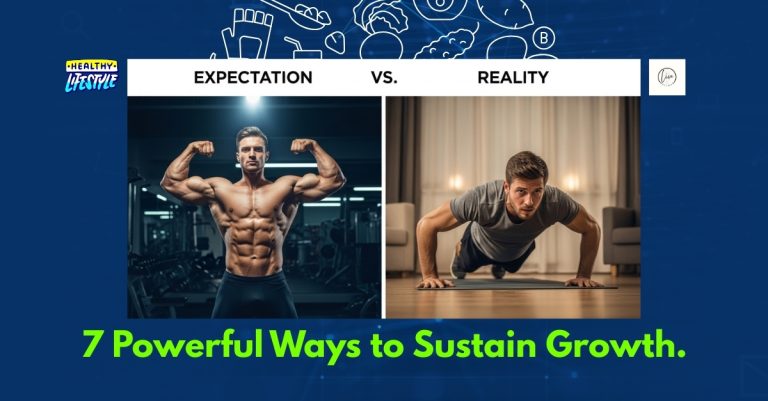Table of Contents
Mental performance collapses predictably: It’s 2 PM on a Wednesday, you’ve been grinding since 8 AM, and your brain feels like a browser with 47 tabs open everything’s running, but nothing’s loading properly.
You know you need a break, but scrolling social media for five minutes leaves you more drained than before. Another coffee? That’s just masking the problem. Your mind isn’t tired from lack of caffeine, it’s overwhelmed, overstimulated, and desperate for a genuine reset.
This is where mental performance becomes your competitive advantage. While most people push through mental fog or collapse into passive distractions, high performers understand something crucial: the quality of your breaks determines the quality of your output.
Mental performance isn’t reserved for Olympic athletes or Navy SEALs. It’s the trainable capacity to regulate your focus, emotions, and energy under pressure. And the fastest way to build it? Strategic mental breaks that actively reset your cognitive system instead of letting it drift.
In this guide, you’ll discover seven fearless breaks each taking 30 seconds to 5 minutes, that physiologically and psychologically reset your mind. These aren’t relaxation techniques disguised as productivity hacks. They’re intentional interventions backed by neuroscience, designed for the moment when your mental performance starts slipping.
By the end, you’ll have a practical toolkit to reclaim your focus, sharpen your decisions, and sustain peak mental performance throughout your day. No meditation cushion required. No prior experience needed. Just you, a few minutes, and the courage to break differently.
Why Mental Breaks Are Critical for Mental Performance ?
Your brain consumes roughly 20% of your body’s energy despite being only 2% of your body weight. Every decision you make, every email you process, every problem you solve depletes your cognitive resources. This isn’t weakness, it’s biology.
When you push through mental fatigue without strategic breaks, three things happen:
1. Decision Quality Tanks.
Studies on judges reviewing parole cases revealed a shocking pattern: favorable decisions dropped from 65% to nearly 0% as mental fatigue increased throughout the day. After breaks? Decisions reset to baseline quality. Your mental performance directly correlates with how well you manage cognitive depletion.
2. Emotional Regulation Breaks Down.
The prefrontal cortex, your brain’s executive control center goes offline when overworked. That’s why you snap at colleagues over minor issues or feel irrationally overwhelmed by simple tasks late in the day. Mental breaks restore prefrontal function and emotional stability.
3. Creative Problem Solving Disappears.
When your default mode network (the brain’s background processing system) never gets space to activate, you lose access to insight and creative connections. Mental performance isn’t just about focus it’s about knowing when to step back so breakthrough thinking can emerge.
The science is clear: mental breaks aren’t interruptions to productivity. They’re essential maintenance for sustained mental performance. Elite performers don’t power through they reset strategically.
The question isn’t whether you need breaks. It’s whether your breaks are actually working.
Read our previous article
“Reality vs Expectations: 7 Powerful Ways to Sustain Growth.”
7 Fearless Breaks to Reset the Mind.
Break 1: The Sensory Anchor.
Why It Works
When mental performance deteriorates, you’re often trapped in mental rumination, rehashing past conversations or worrying about future outcomes. Your attention is everywhere except the present moment. The Sensory Anchor leverages your five senses to hijack this loop and ground you in immediate reality. It activates the anterior cingulate cortex, which regulates attention and pulls you out of autopilot mode.
Step by Step Instructions:
- Stop what you’re doing and sit or stand still (30 seconds total).
- Identify 5 things you can see (name them silently: “blue pen, coffee stain, window reflection…”).
- Identify 4 things you can physically feel (clothing texture, chair pressure, air temperature, feet on floor).
- Identify 3 things you can hear (distant conversation, keyboard clicks, ventilation hum).
- Identify 2 things you can smell (even if subtle paper, your own soap, air quality).
- Identify 1 thing you can taste (residual coffee, mint, or simply the taste in your mouth).
Pro Tip
Do this before high stakes moments presentations, difficult conversations, or critical decisions. It shifts you from scattered mental performance to focused presence in under a minute.
Mini Story
I use this before every coaching call. One afternoon, I was spiraling about a difficult client email I’d received an hour earlier. My mind kept drafting replies instead of being present for my next client. I ran through the Sensory Anchor while waiting for them to join the video call. By the time they appeared on screen, I was fully present. That session became one of our most productive, simply because my mental performance wasn’t hijacked by residual stress.
Break 2: The Power Breath.

Why It Works
Stress activates your sympathetic nervous system heart rate increases, cortisol spikes, and your body prepares for fight or flight. This response demolishes mental performance by narrowing your cognitive bandwidth. The Power Breath deliberately activates your parasympathetic system through controlled breathing patterns that signal safety to your brain. Within 90 seconds, you can measurably lower heart rate variability and restore executive function.
Step by Step Instructions:
- Sit comfortably with feet flat on the floor.
- Put one hand on your belly and one on your chest.
- Inhale slowly through your nose for 4 counts (belly should expand, not chest).
- Hold your breath gently for 4 counts.
- Exhale slowly through your mouth for 6 counts (longer exhale is key).
- Pause naturally for 2 counts before next inhale.
- Repeat for 3-5 full cycles (about 90 seconds).
Pro Tip
The longer exhale is what triggers the parasympathetic response. If 4-4-6 feels forced, try 3-3-5 or 5-5-7. Find your rhythm. Mental performance improves when you’re working with your body, not fighting it.
Mini Story
Before a high pressure pitch to potential investors, my co-founder was visibly anxious rapid speech, fidgeting hands, scattered thoughts. I pulled him aside for 90 seconds and walked him through the Power Breath. His shoulders dropped. His speech slowed. He walked into that room and delivered the clearest pitch of his life. He didn’t become less nervous, he regulated his nervous system so his mental performance could shine through the nerves.
Break 3: The Micro Movement Reset.

Why It Works
Sitting for extended periods creates physical stagnation that directly impairs mental performance. Blood flow decreases, muscle tension builds, and your brain literally gets less oxygen. Movement even brief, intense movement, floods your system with oxygen, releases accumulated physical tension, and triggers a dopamine micro boost that restores motivation and clarity.
Step by Step Instructions:
- Stand up from your workspace (commit to 2 minutes).
- Do 10 jumping jacks at moderate intensity.
- Follow with 10 deep bodyweight squats (focus on full range of motion).
- Add 10 standing torso twists (arms extended, rotate from the core).
- Finish with 10 arm circles forward, then 10 backward.
- Shake out your entire body for 10 seconds like you’re drying off after a swim.
- Take three deep breaths and return to your work.
Pro Tip
Set a timer for every 90 minutes. When it goes off, do this break non negotiably. Mental performance operates in ultradian rhythms, your focus naturally peaks and dips in 90-120 minute cycles. Work with your biology, not against it.
Mini Story
During a particularly brutal writing session, I hit a wall at hour three. Every sentence felt forced. I was rereading the same paragraph repeatedly without processing it. Instead of pushing through, I did the Micro Movement Reset in my living room. When I sat back down, the stuck paragraph suddenly had a clear solution. My mental performance hadn’t improved because I “thought harder”, it improved because I gave my brain the physiological reset it needed.
Break 4: The Perspective Shift.
Why It Works
When you’re deep in problem solving mode, your brain enters a narrow, analytical state. This is necessary for detailed work but terrible for big picture thinking and creativity. The Perspective Shift intentionally zooms your mental camera out, activating different neural networks and allowing your default mode network to make connections your focused mind can’t access. This break dramatically improves mental performance by giving you cognitive flexibility.

Step by Step Instructions:
- Step away from your work (physically leave the room if possible).
- Look out a window or go outside for 60 seconds minimum.
- Find something distant a building, tree, horizon, or sky.
- Focus your eyes on that distant object for 20 seconds (this relaxes your eye muscles and signals “far” to your brain).
- Ask yourself one question: “If I were watching myself from above right now, what would I notice?”.
- Let your mind wander to bigger contexts: this project in your overall career, this day in your overall year, this challenge in your overall growth.
- Take one slow breath and return with a wider lens.
Pro Tip
This break is perfect before strategic decisions or when you’re stuck on a specific problem. Mental performance often breaks down not because you lack intelligence, but because you lack perspective.
Mini Story
A friend running a startup was obsessing over a single feature his team was building. He’d spent days in the weeds, convinced this feature would make or break the product. I walked him through the Perspective Shift during a coffee break. He stared at the skyline for 60 seconds, then laughed, “I’ve been acting like this one feature is my entire business. It’s not. It’s one experiment among many.” His mental performance didn’t change because he got smarter. It changed because he remembered context.
Break 5: The Gratitude Interrupt.
Why It Works
Stress, frustration, and mental fatigue create a negativity bias your brain becomes hypervigilant for problems and threats. This state is exhausting and erodes mental performance by keeping you in reactive mode. The Gratitude Interrupt chemically resets your brain by activating dopamine and serotonin pathways. It’s not about “toxic positivity”, it’s about neurochemical balance that restores mental clarity and emotional resilience.

Step by Step Instructions:
- Pause whatever you’re doing and close your eyes (or soften your gaze).
- Think of three specific things you’re grateful for right now not generic (“health”) but concrete (“the fact that my back doesn’t hurt today,” “the way morning light hits my desk,” “having hot coffee whenever I want it”).
- For each item, pause and actually feel the gratitude for 10 seconds (this is key don’t just list them intellectually).
- Notice any physical sensations: warmth in chest, relaxed shoulders, subtle smile.
- Open your eyes and return to your work with this shifted state.
Pro Tip
When mental performance is suffering due to frustration or setbacks, this break is essential. Gratitude doesn’t erase problems, it restores the cognitive flexibility to solve them effectively.
Mini Story
After a project failed spectacularly, I spent two days spiraling, replaying mistakes, catastrophizing future consequences, feeling like everything was falling apart. My mental performance was nonexistent; I couldn’t focus on anything new. A mentor forced me through the Gratitude Interrupt. At first, it felt absurd. But when I genuinely connected with gratitude for my team’s effort, the skills I’d learned, and the freedom to even take risks, something shifted. I wasn’t suddenly happy about the failure, but I could think clearly about next steps. Mental performance returned because my brain exited crisis mode.
Break 6: The Playful Distraction.
Why It Works
High stakes work creates psychological pressure that rigidifies thinking. You become risk averse, less creative, and prone to incremental rather than innovative solutions. Play brief, purposeless, genuinely fun activity, releases this mental grip. It activates reward circuits in your brain, temporarily disengages your prefrontal cortex from “serious mode,” and creates cognitive space for fresh approaches. Mental performance improves when your brain remembers it’s safe to explore.

Step by Step Instructions:
- Choose a 3-5 minute playful activity that has zero connection to your work (doodling, juggling, a quick game on your phone, building something with paper clips, playing with a pet, attempting a TikTok dance, solving a riddle)
- Commit fully, no half attention, no “productive” play like brain training apps.
- Let yourself be genuinely bad at it or silly with it.
- Notice when you laugh, smile, or lose track of time.
- When the timer ends, transition back to work and notice your mental state.
Pro Tip
The activity must feel genuinely playful to you, not what productivity gurus say is playful. If Sudoku feels like work, don’t do Sudoku. Mental performance rebounds when play is authentic, not prescribed.
Mini Story
During a grueling project deadline, my team was burned out and ideas felt stale. I brought a Rubik’s cube to our standup meeting and challenged everyone to solve one face. No one succeeded, but everyone laughed at their terrible attempts. When we returned to the project, someone suggested an approach we’d never considered playful enough to be creative, practical enough to implement. Our mental performance hadn’t improved because we “rested.” It improved because play unlocked cognitive flexibility that stress had shut down.
Break 7: The Energy Inventory.

Why It Works
Most people wait until they’re completely depleted to take breaks. By then, recovery takes much longer and mental performance has already cratered. The Energy Inventory is a metacognitive break, you’re not resting, you’re becoming aware. This awareness itself is the intervention. When you accurately assess your current state, you can make intelligent micro adjustments before things spiral. It trains the self monitoring skill that separates good performers from elite ones.
Step by Step Instructions:
- Stop and close your eyes for 30 seconds.
- Scan your body and mind, rating three dimensions on a scale of 1-10:
- Physical Energy: How does your body feel? (tension, fatigue, vitality).
- Mental Clarity: How sharp is your thinking? (foggy vs. crisp).
- Emotional State: What’s your dominant emotion? (stressed, calm, frustrated, engaged).
- Ask: “What does my system need right now?” (not what your schedule says, what you actually need).
- Choose one micro action: 30 seconds of breathing, a 2 minute walk, a glass of water, switching tasks, or one of the other breaks from this list.
- Take that action immediately.
Pro Tip
Do this inventory at consistent times (start of work, after lunch, mid afternoon) until it becomes automatic. Elite mental performance isn’t about never getting tired, it’s about catching depletion early and responding wisely.
Mini Story
I used to power through entire days, then crash at night wondering why I felt so drained. When I started doing the Energy Inventory every 90 minutes, I noticed patterns: my physical energy stayed high, but my mental clarity tanked after 10 AM if I didn’t take a real break. Armed with this data, I restructured my day, deep work before 10 AM, strategic breaks after, administrative tasks in the afternoon slump. My mental performance didn’t improve because I worked less, it improved because I worked with self awareness instead of against my own rhythms.
10 Healthy Habits: Proven Ways to Unlock Lasting Balance.
Integrating Fearless Breaks Into Daily Life.
Knowing these breaks exists is useless if you don’t actually use them. Here’s how to make them automatic.
Habit Stacking Strategy Attach breaks to existing routines:
- After completing a major task → Sensory Anchor.
- Before every meeting → Power Breath.
- Every 90 minutes of work → Micro Movement Reset.
- When frustration spikes → Gratitude Interrupt.
- Before creative work → Perspective Shift.
- Mid afternoon slump → Playful Distraction.
- Start and end of workday → Energy Inventory.
Suggested Frequency
Aim for 3-5 intentional breaks per day. Mental performance isn’t built through one heroic effort, it’s built through consistent micro practices that compound over time.
Combining Breaks
You can chain breaks for deeper resets:
- Energy Inventory (identify what you need) → Power Breath (calm your system) → Perspective Shift (regain context).
- Micro Movement Reset → Gratitude Interrupt → return to work refreshed physically and emotionally.
Calendar Blocking
Literally schedule breaks on your calendar. Treat them as non negotiable meetings with yourself. Mental performance requires the same discipline as any other skill intention, practice, and protection from competing demands.
Environmental Cues.
Set phone reminders with labels: “Check your energy,” “Time to reset,” “Breathe.”
Place visual reminders where you work: sticky notes, screensaver messages, or objects that trigger break awareness (a small plant, a smooth stone, a meaningful photo).
The goal isn’t perfection. It’s building a rhythm where mental performance maintenance becomes as natural as charging your phone.
Common Mistakes to Avoid
Even with the best tools, people sabotage their mental performance by falling into predictable traps.
Mistake 1: “I Don’t Have Time for Breaks”.
This is like saying you don’t have time to refuel your car because you’re too busy driving. Mental performance breaks aren’t time away from productivity, they’re investments that multiply your output. A 2 minute reset can save you 30 minutes of low quality work. Time scarcity is often a symptom of poor energy management, not proof you need to skip breaks.
Mistake 2: Passive Scrolling as “Breaks”.
Checking social media, news, or email during breaks doesn’t reset your mind, it overstimulates it with new inputs. Your brain stays in reactive consumption mode. Real breaks are active and intentional. Mental performance requires genuine disengagement, not just switching screens.
Mistake 3: Waiting Until You’re Completely Depleted.
If you wait until you can’t focus at all, recovery takes much longer. Elite performers take breaks from a position of strength (80% energy) rather than desperation (20% energy). Mental performance thrives on prevention, not emergency intervention.
Mistake 4: Doing Breaks Mechanically Without Presence.
Going through the motions doesn’t work. If you do the Power Breath while mentally drafting an email, you get no benefit. The effectiveness of these breaks depends on full engagement for those few minutes. Quality over quantity.
Mistake 5: Not Customizing to Your Needs.
These seven breaks are starting points, not rigid rules. Some will resonate deeply; others won’t fit your style. Notice what actually works for you. Mental performance is personal, what resets your mind might not reset someone else’s.
Mistake 6: Skipping Breaks When Things Are Going Well.
Many people only take breaks when performance has already declined. But breaks aren’t just for recovery, they’re for maintenance. Taking breaks when you feel good sustains that state longer. Mental performance is a marathon, not a series of sprints.
Conclusion
Mental performance isn’t a genetic gift reserved for elite athletes and high achieving executives. It’s a trainable skill that anyone can develop through intentional practice and strategic breaks are the fastest entry point.
You now have seven fearless breaks that physiologically and psychologically reset your mind:
- The Sensory Anchor – ground yourself in the present.
- The Power Breath – activate your calm nervous system.
- The Micro Movement Reset – flood your brain with oxygen and energy.
- The Perspective Shift – zoom out for cognitive flexibility.
- The Gratitude Interrupt – reset your neurochemistry.
- The Playful Distraction – unlock creativity through joy.
- The Energy Inventory – build self awareness before depletion.
These aren’t theoretical concepts. They’re practical tools you can deploy today, between meetings, during frustrating moments, before high stakes decisions, or whenever your mental performance starts slipping.
The difference between average and exceptional performance often comes down to one factor: knowing when and how to reset. Most people wait until they’re completely burned out. You now know better.
Start with one break. Pick the one that resonates most and use it three times this week. Notice what changes, your focus, your mood, your decision quality, your resilience. Mental performance compounds through small, consistent actions.
Your mind is your most valuable asset. Treat it accordingly.
TOP 15 FAQ
-
What is the meaning of mental performance?
Mental performance is your brain’s ability to focus, regulate emotions, and make decisions effectively under pressure.
-
What is another word for mental performance?
Synonyms include cognitive function, mental sharpness, or focus capacity.
-
Why is mental performance important?
It determines how well you think, adapt, and recover directly impacting productivity, creativity, and resilience.
-
Mental performance exercises
Use short, science backed resets like deep breathing, sensory grounding, and micro movements to recharge focus.
-
Mental performance Tablets
Supplements can’t replace habits. Mental resets, proper sleep, and balanced nutrition work better long term.
-
Mental performance in sports
Athletes train mental performance to stay calm, focused, and emotionally stable during high pressure moments.
-
Mental performance psychology
It studies how focus, emotion regulation, and recovery shape consistent peak performance and decision making.
-
Mental Performance vitamins
Nutrients like omega-3s, magnesium, and B vitamins support brain energy, but mindset habits drive real results.
-
Mental performance coach
A coach helps you build focus habits, regulate emotions, and develop resilience for consistent top performance.
-
Mental performance synonym
Common synonyms: mental stamina, cognitive endurance, focus control, or mind efficiency.
-
How can I improve mental performance fast?
Take strategic breaks every 90 minutes, like Power Breath or Micro Movement Reset, to restore clarity.
-
What causes low mental performance?
Overwork, poor sleep, emotional fatigue, and skipping real breaks drain focus and slow cognitive recovery.
-
How do mental breaks improve performance?
They reset your nervous system, refresh focus, and reactivate creativity networks in the brain.
-
How do I maintain peak mental performance daily?
Integrate mindful breaks, track energy levels, and recover before depletion not after burnout.
-
What are examples of mental performance training?
Techniques include gratitude resets, perspective shifts, controlled breathing, and awareness based micro habits.



